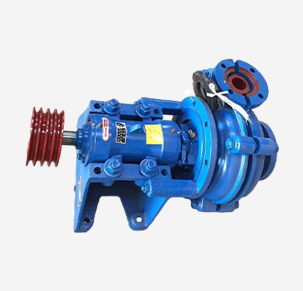English
- Afrikaans
- Albanian
- Amharic
- Arabic
- Armenian
- Azerbaijani
- Basque
- Belarusian
- Bengali
- Bosnian
- Bulgarian
- Catalan
- Cebuano
- Corsican
- Croatian
- Czech
- Danish
- Dutch
- English
- Esperanto
- Estonian
- Finnish
- French
- Frisian
- Galician
- Georgian
- German
- Greek
- Gujarati
- Haitian Creole
- hausa
- hawaiian
- Hebrew
- Hindi
- Miao
- Hungarian
- Icelandic
- igbo
- Indonesian
- irish
- Italian
- Japanese
- Javanese
- Kannada
- kazakh
- Khmer
- Rwandese
- Korean
- Kurdish
- Kyrgyz
- Lao
- Latin
- Latvian
- Lithuanian
- Luxembourgish
- Macedonian
- Malgashi
- Malay
- Malayalam
- Maltese
- Maori
- Marathi
- Mongolian
- Myanmar
- Nepali
- Norwegian
- Norwegian
- Occitan
- Pashto
- Persian
- Polish
- Portuguese
- Punjabi
- Romanian
- Russian
- Samoan
- Scottish Gaelic
- Serbian
- Sesotho
- Shona
- Sindhi
- Sinhala
- Slovak
- Slovenian
- Somali
- Spanish
- Sundanese
- Swahili
- Swedish
- Tagalog
- Tajik
- Tamil
- Tatar
- Telugu
- Thai
- Turkish
- Turkmen
- Ukrainian
- Urdu
- Uighur
- Uzbek
- Vietnamese
- Welsh
- Bantu
- Yiddish
- Yoruba
- Zulu
Telephone: +86 13120555503
Email: frank@cypump.com
Nov . 06, 2024 09:49 Back to list
Understanding Sewage Sump Pumps and Their Importance in Wastewater Management
Understanding Sewage Sump Pumps An Essential Guide
Sewage sump pumps are crucial components in managing wastewater in residential and commercial properties. They serve an essential function in the sanitary disposal of sewage, ensuring that waste is efficiently transported to the municipal sewer system or a septic tank. This article aims to provide an overview of sewage sump pumps, their functions, and the various types available on the market.
What is a Sewage Sump Pump?
A sewage sump pump is designed to remove wastewater from underground basements or pits where sewage can accumulate. Unlike regular sump pumps that handle clear water, sewage pumps are built to manage and transport water mixed with solids, such as human waste and paper. They are typically installed in a sump pit—a basin dug into the ground where sewage collects before being pumped away.
How Do Sewage Sump Pumps Work?
Sewage pumps operate through a straightforward mechanism. As waste water fills the sump pit, it activates the float switch, which then turns the pump on. The pump then moves the sewage through a discharge pipe, sending it to the appropriate location—usually either a municipal sewer system or a septic tank. The design of sewage pumps allows them to handle solids up to several inches in diameter, ensuring efficient operation even when confronted with a mixture of waste.
Types of Sewage Sump Pumps
Sewage sump pumps come in various styles and configurations to suit different needs
1. Submersible Sewage Pumps These models are installed underwater in the sump pit, allowing for a quieter operation and reduced risk of flooding. They are designed to remain submerged during operation, which helps prevent odor issues and provide safety and efficiency.
2. Effluent Pumps These pumps are used to move sewage that doesn’t contain large solids. They are often used in systems where the wastewater is mostly clear and light, and they can be more energy-efficient.
sewage sump pumps

3. Above-Ground Pumps These models sit above the sump pit and pump waste up and out. They are typically easier to service and have a longer lifespan in certain environments.
4. Grinder Pumps These pumps use sharp blades to grind solids into a slurry, making it easier to transport through small pipes. They are ideal for homes located below the main sewer line, where a standard sewage pump would struggle to lift waste.
Maintenance and Care
Regular maintenance is essential for ensuring the longevity and efficiency of sewage sump pumps. Homeowners should inspect their pumps and sumps periodically to check for clogs, debris, and wear. Here are some maintenance tips
- Routine Inspection Check the pump's operation at least once a year and before heavy rain seasons. Ensure the float switch is functional and that there are no obstructions.
- Cleaning Remove debris and sediment from the sump pit to prevent clogs and improve pump efficiency.
- Test the Pump Pour water into the sump pit to ensure the pump activates and operates properly.
- Professional Service Consider calling a professional if unfamiliar with pump maintenance or if any issues arise.
Conclusion
Sewage sump pumps play a vital role in wastewater management in many properties. Understanding their function and the types available can help homeowners make informed decisions when installing or maintaining these systems. With proper care, a sewage sump pump can provide years of reliable service, protecting your home from potential water damage and ensuring a sanitary living environment. If you have specific needs, consulting with a plumbing professional can further guide you in selecting the right pump for your requirements.
-
ISG Series Vertical Pipeline Pump - Chi Yuan Pumps Co., LTD.
NewsJul.30,2025
-
ISG Series Vertical Pipeline Pump - Chi Yuan Pumps Co., LTD.|energy-efficient fluid handling&industrial durability
NewsJul.30,2025
-
ISG Series Vertical Pipeline Pump - Chi Yuan Pumps | Advanced Engineering&Industrial Efficiency
NewsJul.30,2025
-
ISG Series Pipeline Pump - Chi Yuan Pumps | High Efficiency, Energy Saving
NewsJul.30,2025
-
ISG Series Vertical Pipeline Pump-Chi Yuan Pumps|High Efficiency&Reliable Performance
NewsJul.29,2025
-
ISG Series Vertical Pipeline Pump|High Efficiency&Low Noise
NewsJul.29,2025










